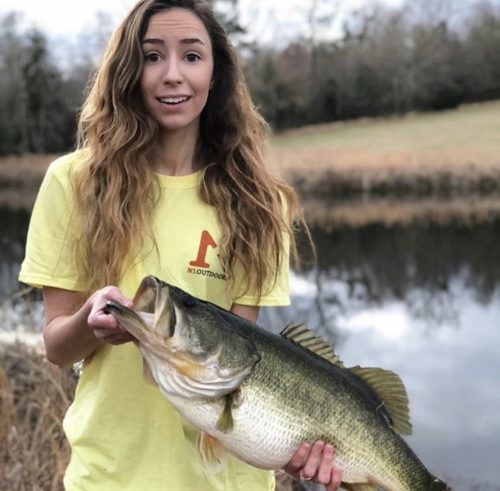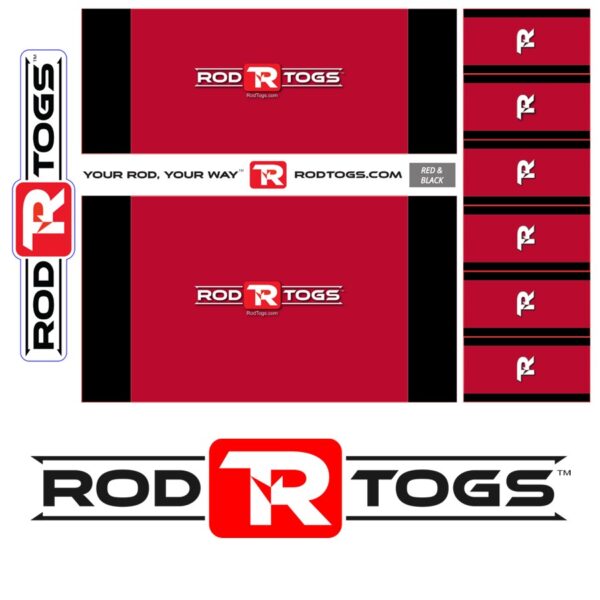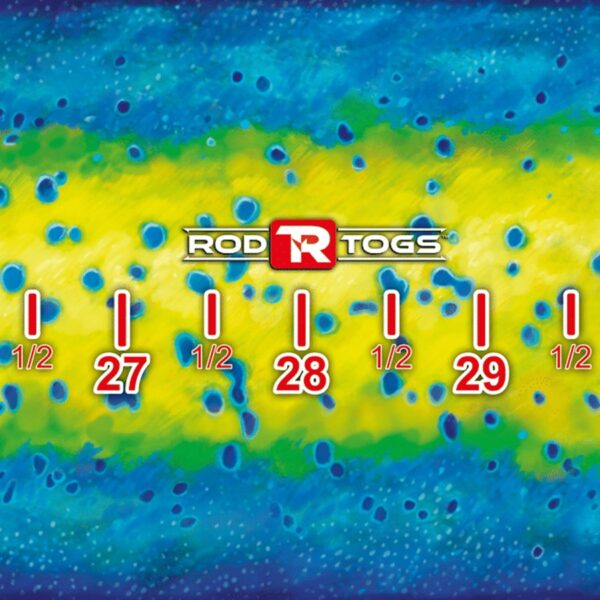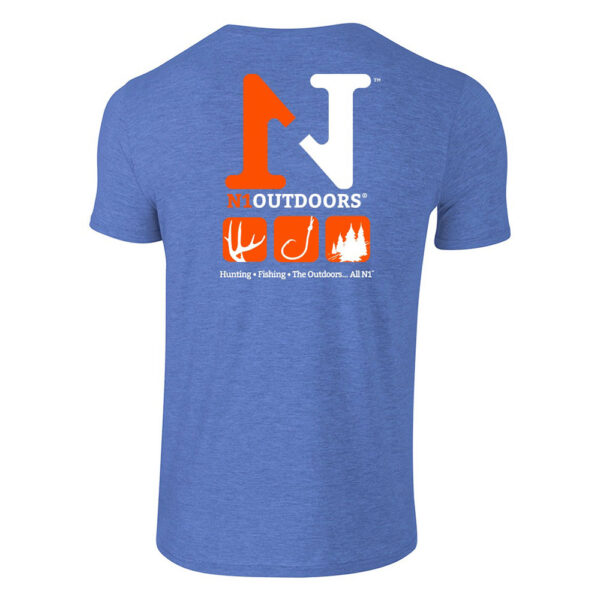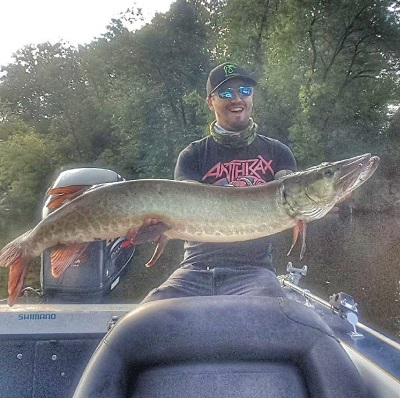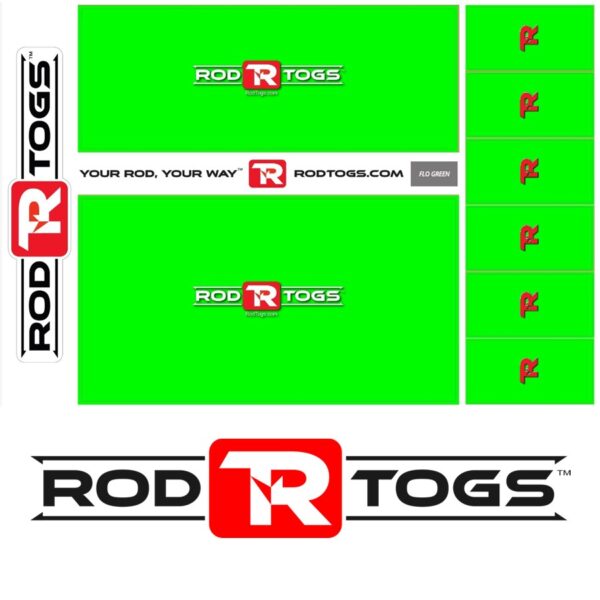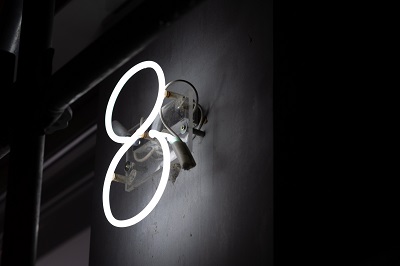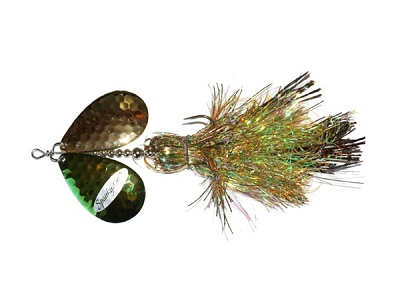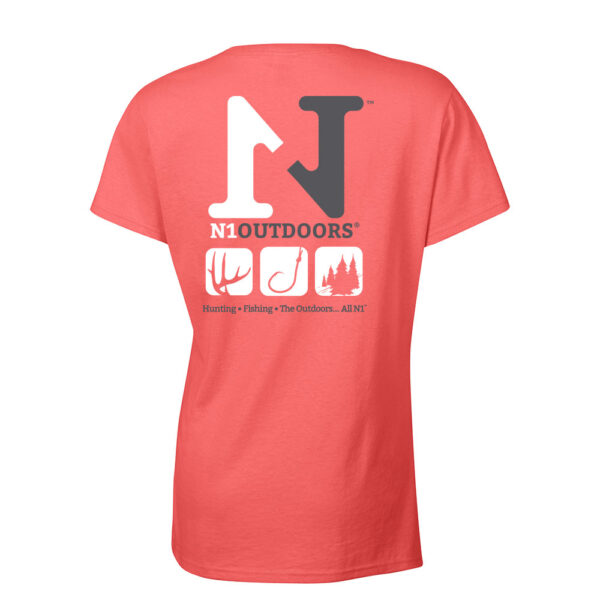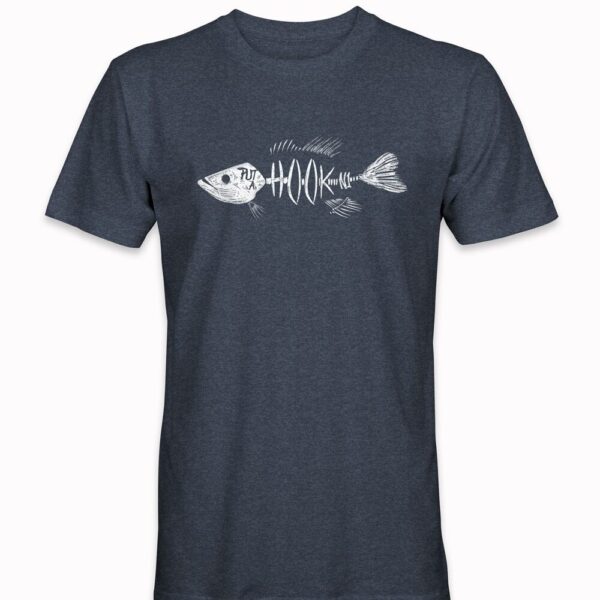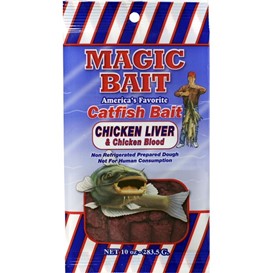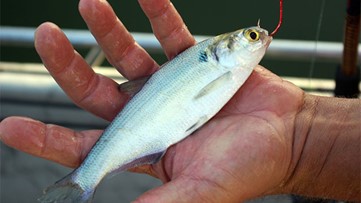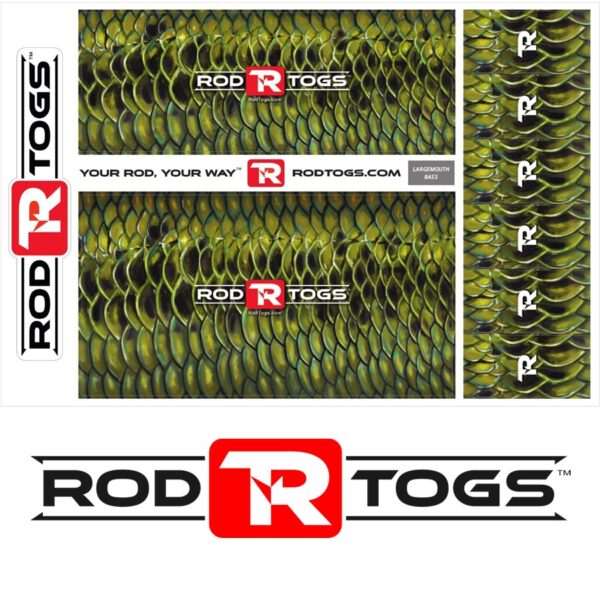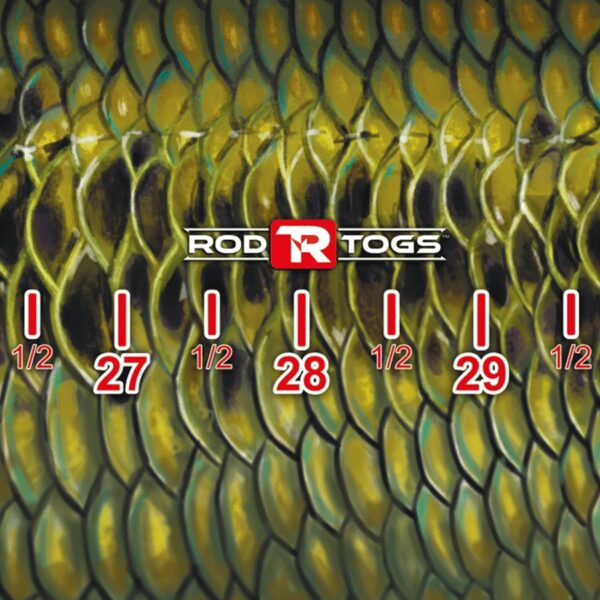All over the world, anglers are flocking to waterways in hopes of catching a trophy fish. To be more specific, bass is a species being targeted for sport at a record level.
Whether it be huge largemouth in Mexico, giant smallmouth in Canada, or monstrous peacock bass in Brazil, people are doing all they can to get hooked up.
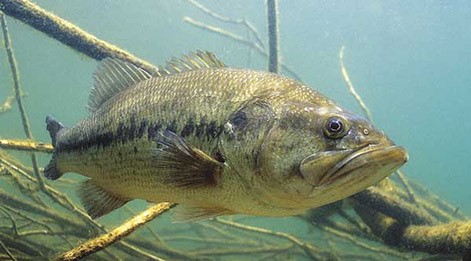
While bass fishing marketing and advertising centers around artificial lures, why not go with the original… live bait!
And, while most of the marketing push surrounds artificial lures, there are plenty of live bait options that do as good or better than anything you can buy in a sporting goods or online store.
Each subspecies of bass will differ, so knowing live bait options will help set you up for success whether you are angling from a boat or simply enjoying bass fishing from the bank.
So, let’s cover some of the best live bait for bass according to subspecies!
Best Live Bait For Largemouth Bass
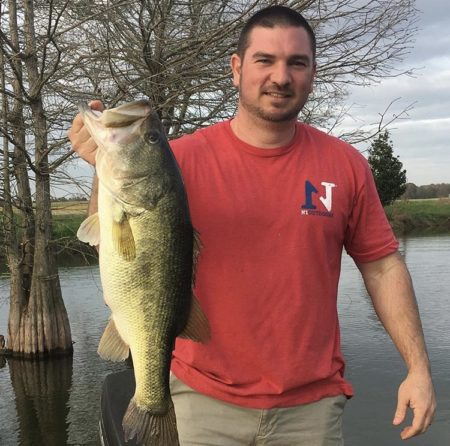
Largemouth bass are primarily found in North America, where they are the biggest and most abundant.
Although many anglers prefer artificial lures for largemouth, live bait can be very beneficial to use.
Here are the best live bait options for largemouth bass.
- Shad
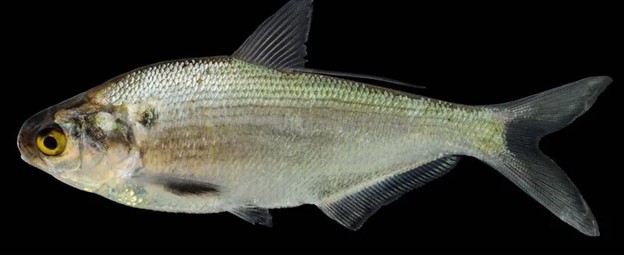
Live shad are a prime target of hungry largemouth and they are readily available at most bait shops. (photo credit: Missouri Dept. of Conservation)
Shad may be the most targeted live bait as they are the natural food source for largemouth all over North America. Especially in areas with rip rap or man-made structure, shad tends to be around.
There are a couple of ways to get shad. First, you can buy live shad at your local bait shop. This keeps the presentation fresh and effective.
Secondly, you can catch your own shad. This is a bit tricky, as you need a cast net and some skill, but with some practice, you can catch your own shad.
Finally, you can buy packaged, dead shad. Although this is not live bait technically, some bait shops will have preserved shad to use.
No matter what type of shad you pick, hook them along the back fin to provide natural movement.
- Worms

Worms, and more specifically nightcrawlers, are a great live bait option for largemouth. (photo credit: Farm and Dairy)
The imitation of worms make up a huge sect of the artificial lure market, so going right to the original source can be beneficial. Specifically, nightcrawlers are great for largemouth due to the size and scent.
To enhance the look, you may need to use a Texas rig or some sort of jig setup. This will get the worm down in the water column quickly and into the strike zone.
- Bluegill
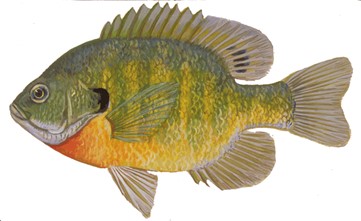
Bluegill are a favorite of largemouth bass. Be sure to check your local game laws regarding the use of bluegill as bait (photo credit: Wisconsin Dept of Natural Resources)
Especially in the northern United States, largemouth feast on bluegill.
Stick with smaller bluegill and hook them through the mouth or back fin to let the fish move around naturally.
The more coloration the better, as this is what grabs attention.
Best Live Bait For Smallmouth Bass
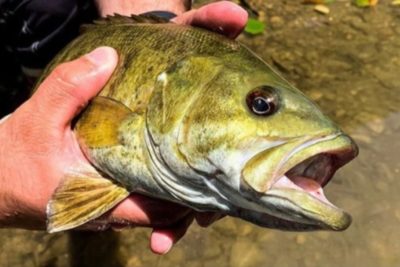
The largemouth’s smaller, but feistier, cousin, is the smallmouth. Smallmouth bass have a ton of fight and have slightly different feeding patterns.
Below are the top three live bait options for smallmouth bass.
- Crawfish
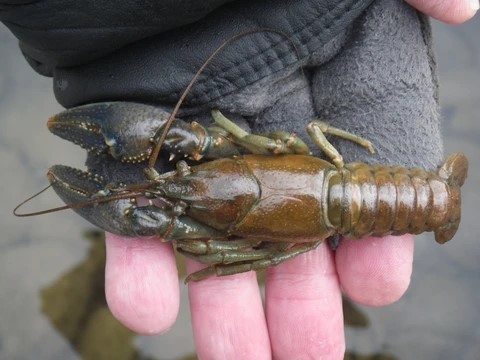
When it comes to smallmouth bass, crawfish (or “crawdads”) can entice big smallmouth bites! (photo credit: Murray’s Fly Shop)
The best live bait offering for smallmouth is crawfish.
Craws are a natural food source of smallmouth, and many artificial lures are made to imitate them. You can capture your own crawfish or buy them live at a bait shop.
Crawfish are best rigged on the back of a jig or free flow with the hook through the tail.
Throwing these in rock piles and in eddies of flowing water can harbor strong bites.
In many cases, the bigger the claws the better. This means there will be more action and a more enticing presentation.
-
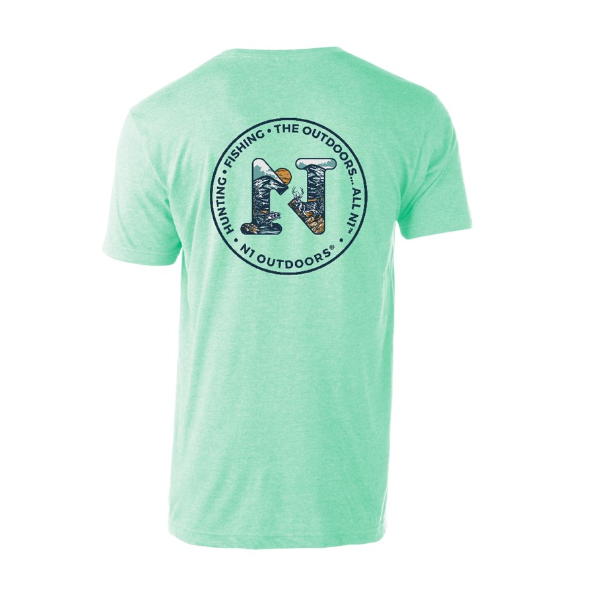
The “Outdoors All N1™” Hand Illustration Tee
$24.99 – $28.99 Select options This product has multiple variants. The options may be chosen on the product page -
Sale!
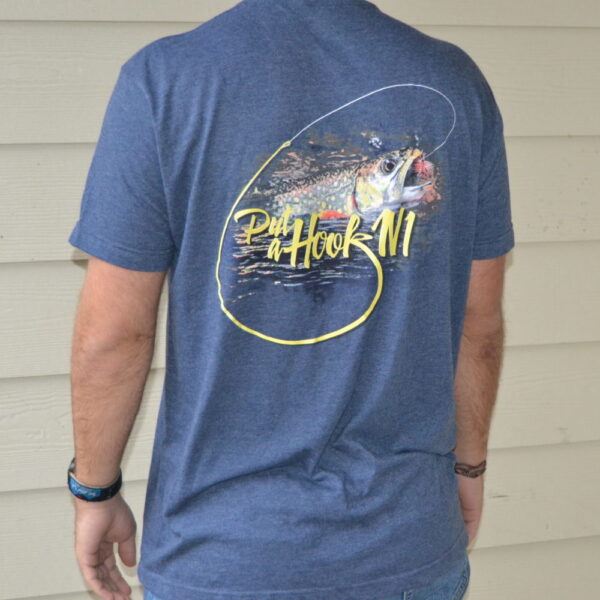
N1 Outdoors® Put A Hook N1™ Trout Short-Sleeve Tee
$5.00 Select options This product has multiple variants. The options may be chosen on the product page -
Sale!

Put A Hook N1™ Bucket Bite Logo Tee (Columbia Blue & Heather Mint)
$9.00 Select options This product has multiple variants. The options may be chosen on the product page
- Minnows
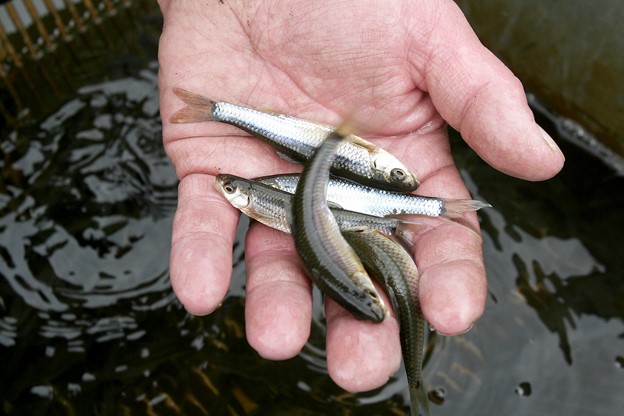
Minnows are a good live bait choice for smallmouth and can be found at just about every bait shop. (photo credit: Forum News Service)
If you are in larger lakes or other areas with smallmouth, minnows could be very useful. Minnows are baby fish and are eaten naturally by this subspecies.
Minnows are best on jigheads or dropshots as these both give the presentation a little more action and efficiency.
Minnows can be found at just about any bait shop that sells live bait. You can also gather minnows yourself with minnow traps.
- Nightcrawlers
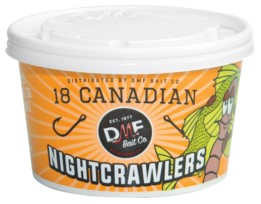
Night Crawlers are a solid live bait choice for smallmouth bass (photo credit: DMF Bait)
This is the one option that has a bit of crossover between largemouth and smallmouth at a successful level.
Nightcrawlers are naturally found in the cracks and crevices of water systems.
Smallmouth just so happen to live and feed in these areas. So, use some weight or a jig to get that worm down and into the strike zone.
Best Live Bait For Striped Bass
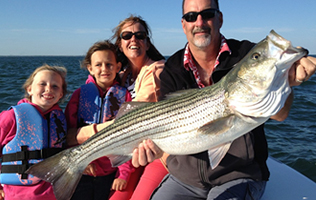
Striped bass are the largest of the subspecies and can be found in freshwater and saltwater.
Here are the best live bait options for striped bass:
- Shad

Shad aren’t just for largemouth bass… they are a desired food source of striped bass as well. (photo credit Mass.gov)
Shad is the most popular live bait, especially when targeting freshwater striped bass.
These bait fish are naturally eaten, so you are tapping into the normal diet of a striped bass.
The big perk of using shad is the availability. They can be caught yourself or found at a majority of bait shops. Hook these behind the back fin to allow the fish to swim naturally.
-
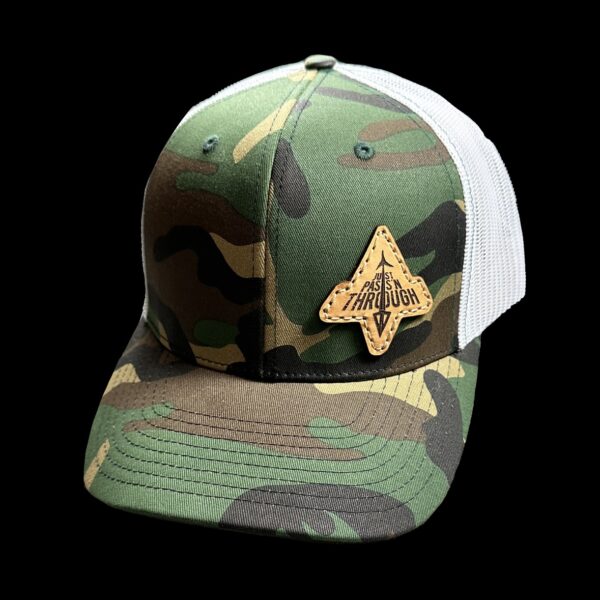
Just Pass’N Through™ Green Camo/White Leather Patch Hat
$29.99 Select options This product has multiple variants. The options may be chosen on the product page -
Sale!
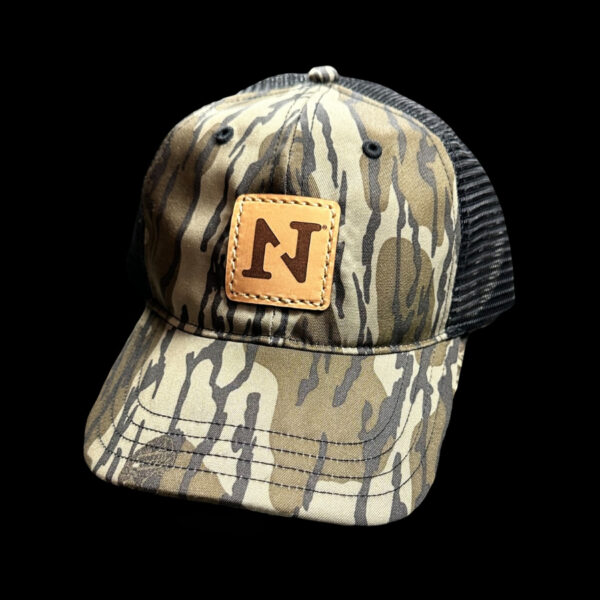
N1 Logo Leather Patch Hat (Mossy Oak Bottomland)
Original price was: $26.99.$19.99Current price is: $19.99. Select options This product has multiple variants. The options may be chosen on the product page -
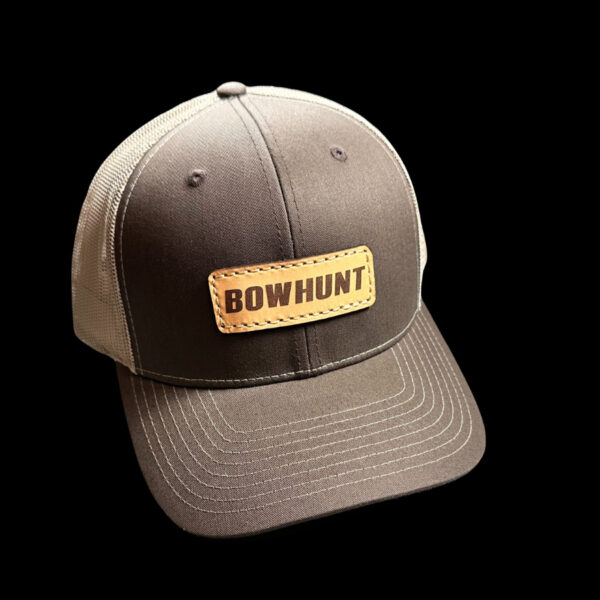
N1 Outdoors® “Bowhunt” Leather Patch Hat (Brown/Khaki)
$29.99 Select options This product has multiple variants. The options may be chosen on the product page
- Eels
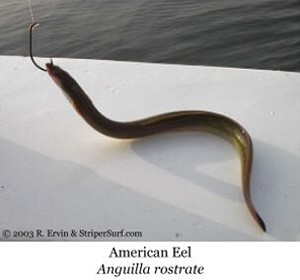
Eels provide action that striped bass have a hard time resisting.(photo credit: American Eel Farm)
One of the more unique baits is eel. Especially for the coastal, saltwater stripers, eel can make a great presentation.
Eels are a bit harder to catch yourself and a bit more expensive at bait shops. And, although they may not seem like an ideal bait, stripers cannot get enough of the taste.
Eels can be rigged on a jighead to add weight. This will move the eel down in the water column and into an area of dense bites.
- Minnows
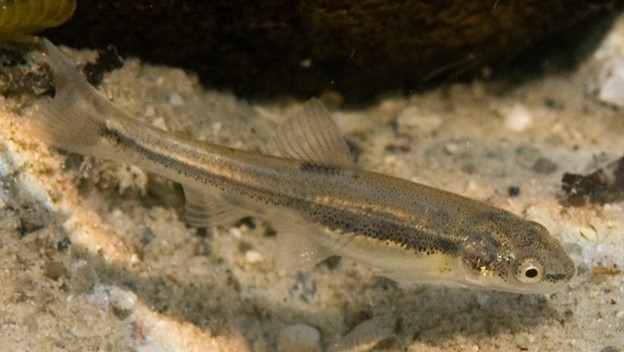
Minnows can be fished on jigs or free-lined for striped bass. (photo credit National Park Service)
Live minnows do a good job targeting both freshwater and saltwater striped bass. These are easily found or bought, so fishing with them is easy. Minnows make great baits on jigs or free swim rigs.
Best Live Bait For Peacock Bass
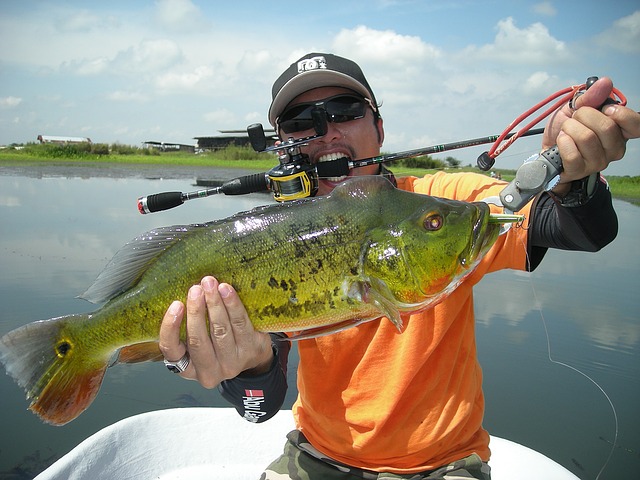
Peacock bass are found only in the South Florida, Hawaii and also the Amazon River.
The most interesting of the four is the peacock bass. These are only found in Hawaii, South Florida, and the Amazon River. So, the fishing opportunities are a bit limited for most people. However, if you can target peacock bass, here are the best live bait options.
- Shiners
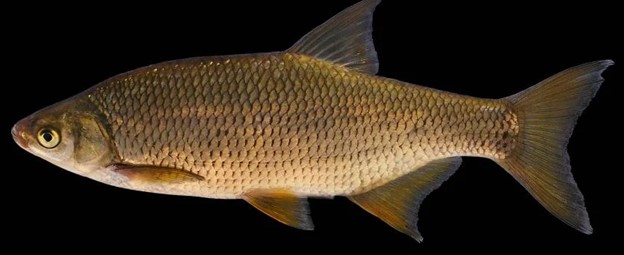
Shiners make the list as a fantastic live bait option for peacock bass. (photo credit: Missouri Dept. of Conservation)
If you ask any peacock angler what their go-to bait is, the answer is usually a shiner.
Shiners are bait fish that peacock eat naturally and can be bought at bait shops as well as caught yourself. They can be fished like shad, so hook it around the anal fin to allow for natural movement.
- Minnows
As with many other subspecies of bass, peacock bass will eat minnows (as well as other native small fish). Due to the availability of minnows at most bait shops, these can be a great live bait option as well.
Conclusion
As you can see, there are some similarities in the live baits that work well for the various subspecies of bass.

